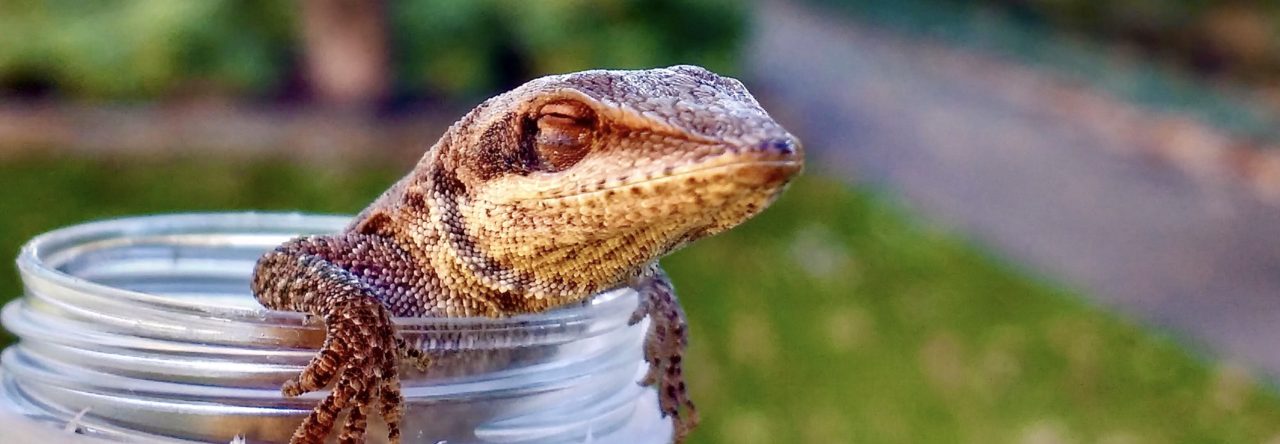
Ameiva ameiva Photo from Fagner Delfim’s Flickr page
Here at Anole Annals we like to obsess over our favorite lizards, anoles of course, but there are a vast array of other reptilian marvels out there, formidable Cyclurid iguanas, regally patterned Chilabothrus boas and of course the ever wary ground lizards of the Antilles (and elsewhere), the ameivas. Given the ample opportunity for exploration of these seemingly under appreciated animals I have taken my best shot at writing a post concerning ameivas, their morphology, ecology an various other bits and pieces of info I’ve picked up over the years; Enjoy!
The large neotropical genus Ameiva contains roughly thirty-two species largely distributed throughout eastern South America and the Caribbean with a few species extending into southern Central America. Within this genus are some of the most ubiquitous lizards of the neotropics, though due to their incredible swiftness and skittish demeanor it is rare that one ever sees one of these charismatic lizards out in the open for any extended period of time and even rarer that the casual observer may encounter enough of them within a single area to appreciate just how numerous they can be. This rather ambitious post focuses mainly on the biogeography of Ameiva, which in many ways mirrors that of Anolis. Most of the information presented herein comes from a 2012 paper which , among other things, revises the genus Ameiva, recognizing several monophyletic clades and excluding certain species once thought to belong to the genus. More info on ameivas, as well as some amazing pictures, can be found at Father Alejandro Sanchez’s website.
Four geographically coherent clades or species groups have been identified within Ameiva, two of which, the ameiva and bifrontata groups, occur in South and Central America as well as in Trinidad and Grenada, while the remaining two, the dorsalis and erythrocephala groups, are distributed parapatrically throughout the Caribbean. Two additional species, A. parecis and A. concolor remain unassigned to any of these four groups.
The bifrontata group is the smallest of the four clades, consisting of one polytypic species, A. bifrontata, as well as the closely related A. provitaae.
-

A. bifrontata
source:http://gallery.surget-groba.ch
This group is almost entirely South American in distribution, occurring in Colombia and Venezuela as well as on the island of Aruba. The clade is thought to share common ancestry with the West Indian Ameiva species and both groups share several defining morphological characteristics the most obvious of which is the presence of mild to intense red coloration on the tip of the snout of most species, a feature shared by no other teiids.
The Caribbean Ameiva form a monophyletic clade thought to be of South American origin
with the South American A. bifrontata species group thought to be sister this one.





















